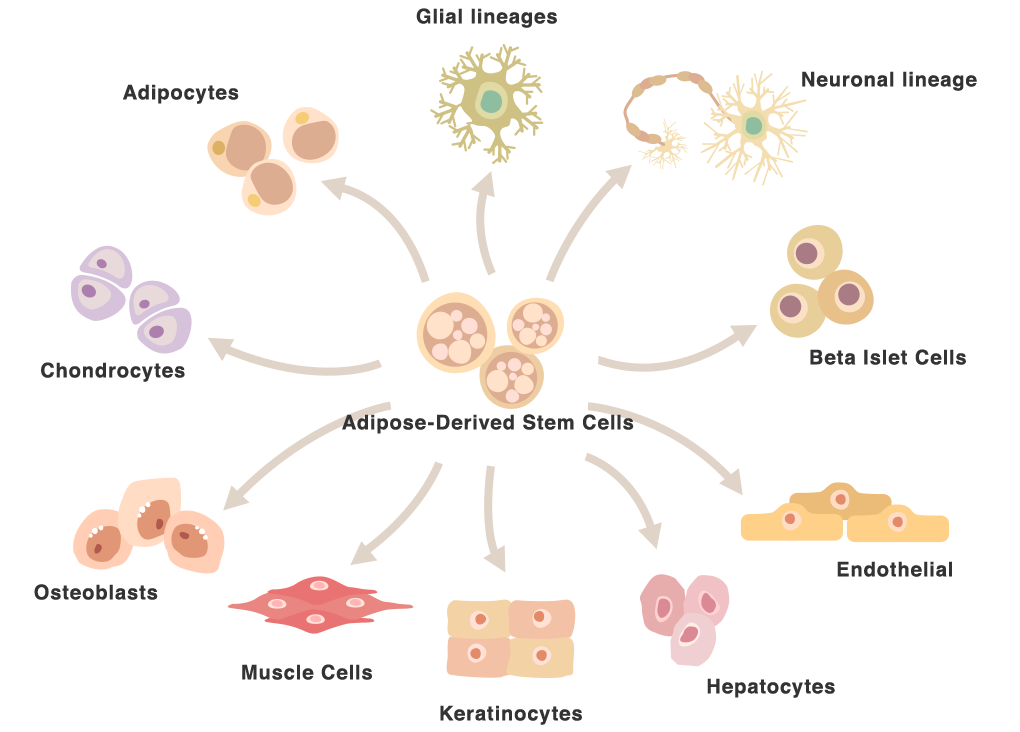Overview
Effective Treatments
With A High Engraftment Rate

What are adipose-derived stem cells? First, let’s take a look at stem cells. Stem cells are cells that have a unique ability to self replicate and divide into different types of cells. This is known as asymmetric cell division (pluripotency). Stem cells are the only cells with pluripotent capabilities and can be found in almost every part of our bodies, from bones and muscles to fat tissue. Regenerative medicine is a rapidly developing field that uses the unique self replicating abilities of stem cells to heal old and damaged tissues with healthy cells.
Adipose-derived stem cells are stem cells found in fat tissue. But what makes these cells so unique?















